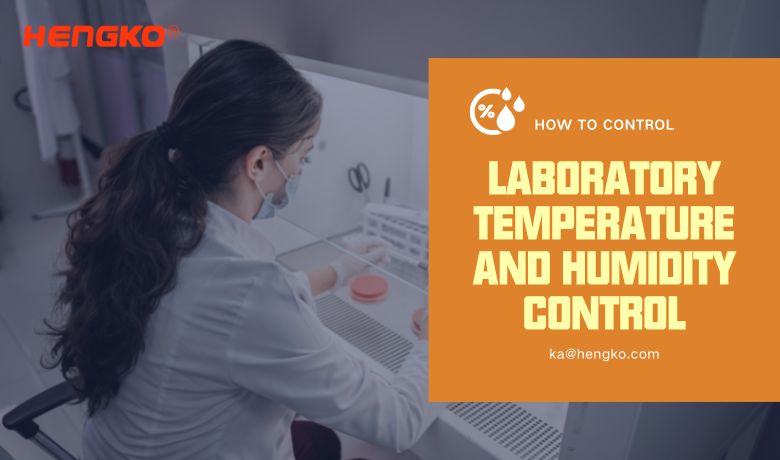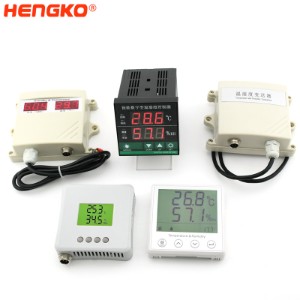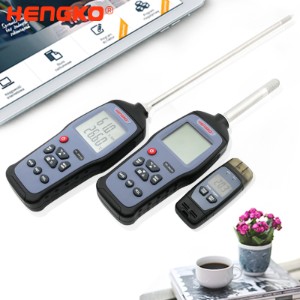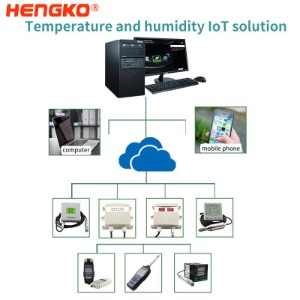
Common laboratory temperature and humidity control requirements, are you clear? Follow us and read on!
Maintaining proper laboratory conditions within the facility not only guarantees the accuracy and reliability of results but also ensures occupational safety. Adhering to standards set by organizations like the Occupational Safety and Health Administration safeguards the well-being of laboratory personnel.
Understanding Laboratory Temperature and Humidity Control
Maintaining optimal laboratory temperature and humidity conditions is crucial for ensuring accurate and reliable results in various scientific experiments and tests. Temperature and humidity control plays a vital role in preventing contamination, maintaining equipment accuracy, and ensuring the comfort and safety of laboratory personnel by minimizing frequent changes in environmental conditions. Proper control of these environmental factors helps in achieving consistent results, which is essential for the credibility of laboratory work. Effective temperature and humidity controls also prevent system malfunctions and extend the lifespan of sensitive instruments.
Importance of Temperature and Humidity Control in Laboratories
Temperature and humidity control is essential in laboratories to prevent the growth of microorganisms, maintain the accuracy of equipment, and ensure the comfort and safety of laboratory personnel. Temperature fluctuations can affect the accuracy of sensitive tests, while humidity levels can impact the growth of microorganisms and the stability of equipment. Moreover, temperature and humidity control is critical in maintaining the integrity of samples and preventing contamination. For instance, high humidity levels can lead to microbial growth, while low humidity can cause static buildup, both of which can compromise test results. Therefore, maintaining an optimal temperature and humidity environment is a primary concern for laboratory management.
Laboratory Temperature and Humidity Conditions
Laboratory temperature and humidity conditions vary depending on the type of experiment or test being conducted. However, there are general guidelines for maintaining optimal temperature and humidity conditions in laboratories. These guidelines ensure that the laboratory environment is conducive to accurate and reliable testing. For example, the World Health Organization and other regulatory bodies provide baseline suggestions for temperature and humidity ranges to ensure compliance with international standards. Adhering to these guidelines helps in achieving consistent results and maintaining the overall quality of laboratory work.
Ideal Temperature and Humidity Ranges
The ideal temperature range for laboratories is between 18-28°C, with a preferred setpoint of 23°C. The acceptable range for humidity is between 30-60% relative humidity (RH). However, these ranges may vary depending on the specific requirements of the experiment or test being conducted. For instance, certain precision work may require a more tightly controlled environment, while general laboratory work can tolerate a broader range. Monitoring temperature and humidity using reliable sensors and humidity monitors is essential to ensure that these conditions are consistently maintained. This helps in preventing contamination, ensuring accurate readings, and maintaining the overall integrity of the laboratory environment.
Laboratory Temperature and Humidity Control Knowledge
In the laboratory monitoring project, different laboratories have requirements for temperature and humidity, and most experiments are conducted in a clear temperature and humidity environment. Laboratory environmental conditions directly affect the results of various experiments or tests, and each experiment requires precise and reliable monitoring instruments to provide accurate data on environmental parameters. In addition, laboratory temperature and humidity, and other factors may not only cause instability in the performance of equipment, and even directly affect the service life of instruments and equipment.
Improper humidity control can lead to accumulated water, causing issues such as air bubbles in lenses or short-circuits in microchips, which underscores the necessity of proper environmental conditions for reliable laboratory operations.
Calibrating equipment is crucial to ensure accurate results, as fluctuations in temperature and humidity can damage instruments and distort readings. Implementing precise calibration practices is necessary to avoid such issues.
Therefore, the laboratory temperature is also an important part of laboratory management. Laboratories need the right temperature and humidity. Indoor microclimate, including temperature, humidity, airflow speed, etc. have an impact on the personnel and equipment working in the laboratory. The suitable temperature is 18~28℃ in summer, 16~20℃ in winter, and the suitable humidity is between 30%~80%. In addition to special laboratories, temperature and humidity have little effect on most physical and chemical experiments, but balance rooms and precision instrument rooms should be controlled according to the need for temperature and humidity.
Therefore, the laboratory temperature is also an important part of laboratory management. Laboratories need the right temperature and humidity. Indoor microclimate, including temperature, humidity, airflow speed, etc. have an impact on the personnel and equipment working in the laboratory. The suitable temperature is 18~28℃ in summer, 16~20℃ in winter, and the suitable humidity is between 30%~80%. In addition to special laboratories, temperature and humidity have little effect on most physical and chemical experiments, but balance rooms and precision instrument rooms should be controlled according to the need for temperature and humidity.
Environmental conditions temperature and humidity control aspects of the elements considered to ensure that the environmental temperature and humidity of the experimental operation can meet the needs of the various processes of the experimental procedures. The temperature and humidity control range of laboratory environment is mainly developed from the following aspects.
First, identify the requirements of each work on the environment temperature and humidity.
Mainly identify the needs of instruments, reagents, experimental procedures, as well as laboratory staff humane considerations (human body in the temperature of 18-25 ℃, relative humidity in the range of 35-80% of the overall feel comfortable, and from a medical point of view of environmental dryness and throat inflammation there is a certain causal relationship) four elements of comprehensive consideration, a list of temperature and humidity control range requirements.
Second, the effective selection and development of the range of environmental temperature and humidity control.
Extract the narrowest range from all the requirements of the above elements as the permissible range of environmental control in this laboratory, develop management procedures in terms of environmental condition control, and develop reasonable and effective SOPs according to the actual situation in this department.
Third, maintain and monitor.
Through a variety of measures to ensure that the temperature and humidity of the environment are within the control range, the use of temperature and humidity sensors to monitor and monitor the environmental temperature and humidity records, the timely measures to exceed the allowable range, open the air conditioning to adjust the temperature, open the dehumidifier to control humidity.
Take a Laboratory As an Example:
* Reagent Room: temperature 10-30℃, humidity 35%-80%
* Sample Storage Room: temperature 10-30℃, humidity 35%-80%
* Balance Room: temperature 10-30℃, humidity 35%-80%
* Moisture Chamber: temperature 10-30℃, humidity 35%-65%
* Infrared Room: temperature 10-30℃, humidity 35%-60%
* Central Laboratory: temperature 10-30℃, humidity 35%-80%
* Retention Room: temperature 10-25℃, humidity 35%-70%
Optimal temperature and humidity ranges for laboratories in various fields, General laboratory temperature control of 23 ± 5 ℃, and humidity control of 65 ± 15% RH,
for different laboratory requirements, they are not the same.
1. Pathology Laboratory
During pathology experiments, the use of instruments such as slicers, dehydrators, staining machines, and electronic balances have relatively strict requirements on temperature. For example, the electronic balance should be used under the condition of stable ambient temperature (temperature change not more than 5°C per hour) as much as possible.
Using a laboratory temperature and humidity monitor to track fluctuations in temperature and humidity helps ensure that laboratory environments remain stable, which is crucial for accurate research outcomes. Instruments that operate continuously often have a higher operating temperature, making it crucial to monitor and control environmental conditions to prevent damage and ensure accurate results.
Therefore, the temperature and humidity conditions in such laboratories need to be monitored and recorded in real-time, and the DSR temperature and humidity recorder can provide accurate temperature and humidity recording data to help the smooth running of various experiments.
2. Antibiotics Laboratory
There are strict requirements for temperature and humidity environment. Generally, the cold place is 2~8℃, and the shade is not more than 20℃. The temperature of antibiotic storage is too high or too low will lead to the inactivation of antibiotics, and the inactivation temperature of different kinds of antibiotics also varies, so the temperature and humidity recorder in this kind of laboratory environment is an important part of the monitoring and recording.
Adhering to humidity requirements is crucial to prevent sample contamination and ensure reliable results. Regulatory requirements from organizations like the FDA and WHO establish optimal humidity ranges, and not adhering to these requirements can compromise research results and impact the facility’s reputation.
3. Chemical Testing Room
Chemical laboratories generally contain a variety of laboratory rooms, such as chemical testing rooms, physical testing rooms, sampling rooms, etc. Each room has different temperature and humidity standards, and each room needs to be monitored regularly by designated personnel, usually twice a day. Using the Hengko temperature and humidity recorder, through a professional network connection, staff can simply view the temperature and humidity conditions of each laboratory at the central console, and download and save the temperature and humidity data during the experiment.
3. Creating a Temperature and Humidity Compliance Strategy
Creating a robust temperature and humidity compliance strategy is essential for maintaining a safe and controlled laboratory environment. This strategy should outline achievable goals for all experiments and processes, ensuring that the laboratory temperature and humidity conditions are consistently within the optimal range.
A comprehensive climate control strategy must include fail-safes to address any issues or malfunctions promptly. For instance, if the temperature or humidity levels deviate from the acceptable range, immediate corrective actions should be taken to restore the conditions. This proactive approach helps in preventing any adverse effects on the experiments and ensures the reliability of the results.
Regulatory guidelines from organizations such as the FDA and the World Health Organization provide valuable benchmarks for developing a climate control strategy. Adhering to these guidelines not only ensures compliance but also enhances the credibility of the laboratory’s work.
Laboratory facilities must have a clear understanding of their climate control capabilities and limitations. This includes knowing the capacity of their air conditioning and ventilation systems, as well as the effectiveness of their humidification systems. Regular maintenance and calibration of these systems are crucial to ensure they function optimally.
Consistent temperature and humidity monitoring is critical for maintaining a positive safety culture in laboratories. Using reliable temperature and humidity monitors helps in tracking environmental conditions in real-time, minimizing the risk of inaccurate laboratory results. Laboratory personnel must be aware of their role in maintaining a safe and controlled environment, including regularly checking and recording temperature and humidity levels.
In summary, a well-defined temperature and humidity compliance strategy, supported by reliable monitoring systems and informed by regulatory guidelines, is essential for ensuring the accuracy and reliability of laboratory results.
4. Laboratory Animal Room
The environment of the animal laboratory requires that the humidity should be maintained between 40% and 60% RH mainly for laboratory animals, for example, if they live in an environment with a relative humidity of 40% or less, it is easy to fall off the tail and die. Temperature and humidity differential pressure recorders can establish a temperature and humidity monitoring and recording system by grouping alarms and other measures, which is conducive to the control of differential pressure, temperature, and humidity in animal rooms. Avoid disease transmission and cross-infection between animals.
Maintaining positive pressure in animal rooms helps prevent contamination and ensures the accuracy of research results by keeping harmful pollutants out of the laboratory space.
Tracking historical data is crucial to identify patterns and assess whether goals are being met. Analyzing this data helps make informed decisions regarding strategy adjustments to ensure reliable lab results.
5. Concrete Laboratory
Temperature and humidity have a definite impact on the performance of some construction materials, so in many standards for material testing environmental conditions are clearly defined and must be observed. For example, GB/T 17671-1999 stipulates that the temperature of the laboratory should be maintained at 20℃±2℃ and the relative humidity should not be less than 50% RH when the specimen is formed. Effective temperature monitoring aids in tracking historical data, analyzing fluctuations, and ensuring compliance with set thresholds, particularly in managing heat to safeguard material performance. It also helps in identifying issues and facilitates strategic revisions to improve laboratory practices and outcomes. A temperature and humidity monitoring and recording system can be established according to the laboratory’s conditions to strengthen the temperature and humidity control in the laboratory.
6. Certification and Metrology Laboratories
Certification and metrology laboratories in the implementation of inspection, accreditation, testing, and certification services, the need for real-time recording of the entire process of temperature and humidity changes, the use of temperature and humidity recorder can simplify the recording work, save costs, and record data will not be too much human interference, can objectively and truly reflect the testing process. Maintaining ideal temperatures in laboratory environments is crucial for accurate research results. Temperature and humidity monitoring systems are essential to achieve and sustain these optimal conditions. Guidelines from the International Standards Organization are critical in maintaining the accuracy and reliability of laboratory results, ensuring compliance with global standards. GLP, GAP, CNAS, ISO17025, ISO15189, ISO17020, ISO9000, ISO16949, ISO14000, and other certifications are the basic requirements for the laboratory environment. HENGKO‘s products meet all requirements, monitor with precision, and provide original records that cannot be tampered with in high precision.
Reasons for Laboratory Temperature Control
According to the standards stipulated in GB/T 4857.2-2005, the temperature of the laboratory should be controlled at about 21℃-25℃, and the relative humidity should be controlled at about 45%-55% to meet the basic experimental requirements, and the more professional experimental requirements will need to provide a constant temperature and humidity environment to maintain the accuracy of the experimental process.
Air conditioning engineers play a crucial role in defining the thermal comfort parameters necessary for workers, ensuring that laboratory conditions meet recognized standards like ASHRAE.
The laboratory’s indoor environment can lead to a sharp temperature difference and humidity is almost non-existent, so the degree of short-term control of the thermostat requires a high degree of strict control from cooling, heating, humidification, and dehumidification in these ways.
At the same time, from the external environment, the temperature and humidity changes in the laboratory room will be affected by external conditions, such as the climate characteristics of the region, the temperature difference between day and night, the impact of various special weather, resulting in high and low changes in temperature and humidity. Therefore, in order to meet the experimental standards must ensure the temperature and humidity balance, to prevent sudden changes in indoor air, the laboratory needs to be sealed isolation of the external environment, and strict requirements for managers to regularly replace the timing of air supply, prohibit the occurrence of personnel negligence on the indoor environment, the use of instruments to measure the environment, to ensure that indoor temperature and humidity to the specified deviation value.
In particular, the relative humidity changes in the laboratory are strictly controlled because the laboratory air does not have other conditions that lead to differences in temperature and humidity, while the temperature of the air changes by as little as 1.0°C, which can lead to substantial changes in relative humidity and affect the normal operation of indoor instruments. Even just a temperature difference of 0.2°C can cause a humidity change of greater than 0.5%.
Therefore, laboratories that are very sensitive to temperature and humidity need to use professional sensors to strictly control deviations, especially for accurate monitoring of humidity. There are two types of sensors, one is a temperature sensor, relatively accurate; the other is a humidity sensor, which will be out of calibration under certain conditions, and must regularly monitor the humidity of the air to ensure accuracy. At the same time, the construction of the laboratory should also pay attention to the uniformity of the entire temperature and humidity control area.
Well, the above is the entire content of this issue of laboratory temperature and humidity control requirements, what other problems do you have for laboratory temperature and humidity control, welcome to consult us to answer questions.
HENGKO's Temperature and Humidity Transmitter can solve your lab's monitor and control temperature and humidity changes.
Also You Can Send Us Email Directly As Follow : ka@hengko.com
We Will Send Back With 24-Hours, Thanks for Your Patient !
Post time: Sep-23-2022









